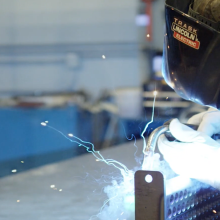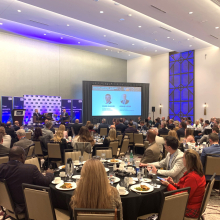Understanding the downturn leads us toward economic recovery
It’s hard to tell where we are in the COVID-19 journey. Four months after the first case in Minnesota, the health risks continue, but businesses have endured state-mandated closures, decreases in consumer demand, supply chain disruptions and staffing challenges. Through it all, they’ve innovated and persevered. Let’s look back at the ups and downs these job creators have experienced as we look forward to economic recovery.
On March 6, Minnesota reported its first case of COVID-19, in Ramsey County. Within two weeks, the virus spread and infected at least another 115 Minnesotans. Office buildings emptied, as employees left to work from home. Malls, schools, bars, restaurants, gyms and other large gathering places began to close, at first voluntarily and then under executive order. Unemployment insurance claims spiked, hitting an unprecedented 95,000. On March 27, a statewide stay-at-home order went into effect, halting all non-essential business activities.
By the end of April – a mere seven weeks after the first reported case – Minnesota had lost over 11% of its total employment and nearly 614,000 Minnesotans had filed claims for unemployment insurance, marking the steepest economic downturn in over seventy years.
As businesses scrambled to figure out how to deal with the onslaught of new challenges the Minnesota Chamber and local chambers throughout the state responded, by providing direct outreach to over thousands of businesses through emails, phone calls and virtual visits. This direct assistance helped employers navigate the dizzying influx of new resources, rules and needs.

This outreach has provided insights into how businesses have responded to the crisis, including:
Unlike past recessions, this crisis hit our economy all at once.
In March and April, roughly two thirds of businesses reported medium or large negative impacts on year-to-date sales and revenue, and over 45% said they’ve made modest or significant cuts to their workforce. One respondent wrote that “business dropped 80% in a day.”
The economic data tell a similar story, as Minnesota’s economy lost over 13% of total employment in April compared to the same time last year.
Business resiliency addresses uncertainty.
Uncertainty has cast a cloud over businesses’ plans and expectations. It is a constant variable for businesses, but the COVID-19 experience has been categorically different. In a recent survey of businesses, uncertainty about the economy ranked first among barriers to business. This is more critical to them than decreased demand or the high costs of taxes and health care.
We don’t know if we’re near the end of the pandemic, or merely at the beginning of the related economic challenges. But we do know that we’ve experienced a change unlike anything in recent history. We also know that Minnesota businesses are resilient. They’ve shifted their business practices and will continue to do everything they can to survive and thrive into the future. And the statewide network of local chambers of commerce is here to help. To help them access financial assistance, grow their network to grow their businesses and help them continue to propel the state’s valued quality of life.

Doug Loon
President
Minnesota Chamber of Commerce


